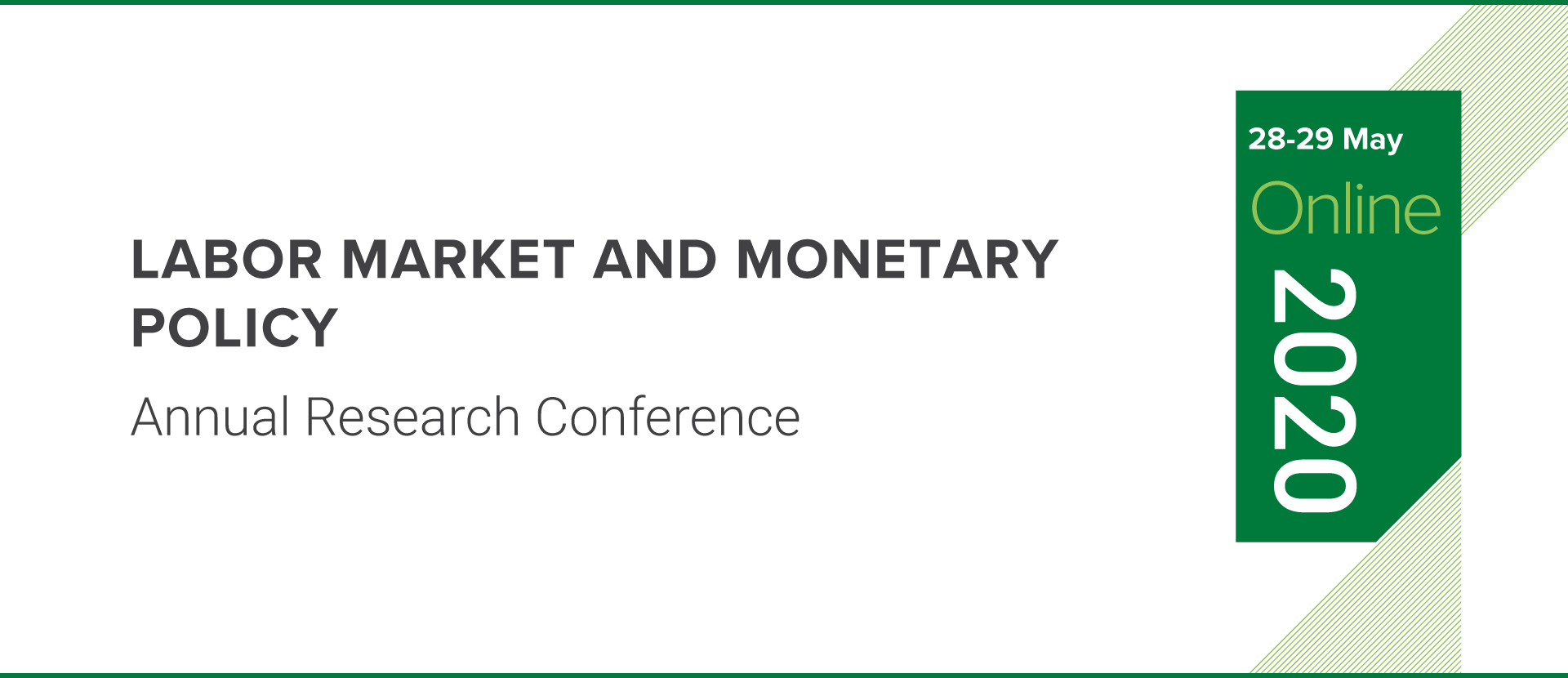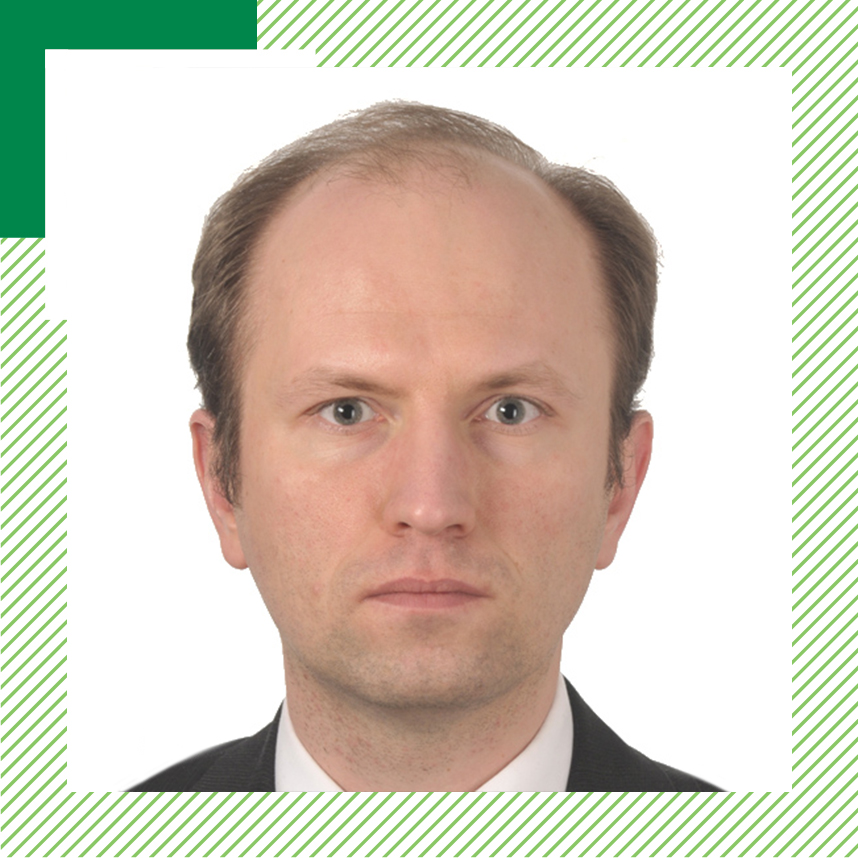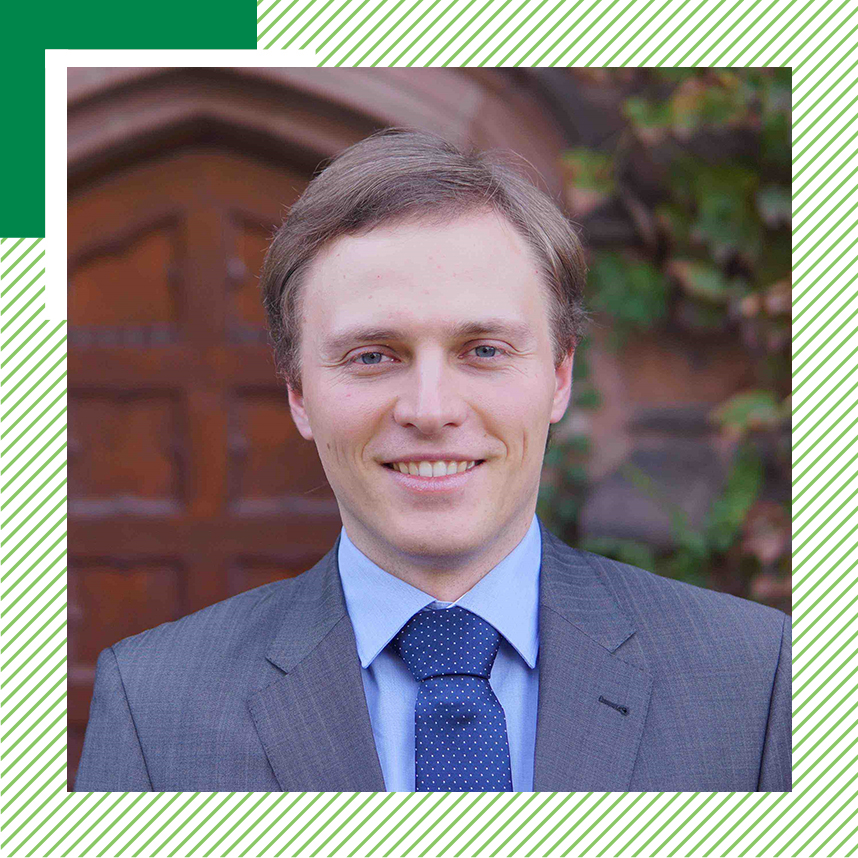
The effectiveness of monetary policy hinges on a thorough understanding of the mechanisms driving labor markets. Their importance in achieving a stable macroeconomic environment has been abundantly highlighted by the current crisis.
In recent decades, many countries have managed to curb inflation and achieve low unemployment. Today, however, monetary policy is facing new structural challenges related to the transformation of labor markets. In particular, rising income inequality, population ageing, global labor market liberalization and migration, along with many other issues, may threaten economic development and long-term macroeconomic stability. Cyclical effects only exacerbate these problems.
Therefore, it becomes urgent to review the relationship between monetary policy and the labor market. What are the current views on the impact of monetary policy on stabilizing economic cycles, and what does the effectiveness of monetary policy depend on? How does monetary policy affect economic inequality? Should lowering inequality be among the central bank’s goals? How justified is the dual mandate of central banks, or is it more advisable to focus on inflation?
These and other topics will be addressed at the Fifth Annual Research Conference of the National Bank of Ukraine on Labor Market and Monetary Policy.
I develop a version of the New Keynesian model with insider-outsider labor markets and hysteresis that can account for the high persistence of European unemployment. I study the implications of that environment for the design of monetary policy. The optimal policy calls for strong emphasis on (un)employment stabilization which a standard interest rate rule fails to deliver, with the gap between the two increasing in the degree of hysteresis. Two simple targeting rules are shown to approximate well the optimal policy. The properties of the model and effects of different policies are analyzed through the lens of the labor wedge and its components.
The strongest predictor of changes in the Fed Funds rate in the period 1982-2008 was the layoff rate. That fact is puzzling from the perspective of representative-agent models of the economy, which imply that the welfare gains of stabilizing employment fluctuations are small. This paper augments a standard New Keynesian model with a labor market featuring countercyclical layoffs that lead to large, uninsurable, and permanent idiosyncratic wage declines. In our benchmark calibration, welfare may be increased by 1 percent of lifetime consumption or more when the central bank's policy rule responds to the layoff rate instead of purely targeting inflation.
This paper revisits the growing disconnect between unemployment and inflation dynamics. First, we propose a novel and simple measure of labor market recovery – the unemployment recovery gap – and show that inflation-unemployment dynamics changed substantially in the 1990s. We then use rich industry-level data to examine the missing inflation puzzle and show that weakening pass-through from wages to prices in the goods-producing sector is an important source of the slow inflation pick-up since 1990. We identify increased import competition as a potential driver of the missing goods inflation following the Great Recession and provide empirical evidence for this channel. International evidence further confirms our hypothesis.
We employ a new Keynesian model with search and matching frictions in the labor market, combined with a simple model of worker heterogeneity, to show how heterogeneity has important implications for the response of employment, hours, and wages in the face of severe contractionary shocks. We focus on the role of selection in both job separations and hiring that lead to differential impacts of recessionary shocks across workers and we show that recessions disproportionately impact low-productivity workers. We identify an externality that results in unemployment spells of low-productivity workers being inefficiently frequent and inefficiently long, lead to worse lifetime labor market outcomes for these workers. The model is used to study the effects of a pandemic, such as COVID-19, which we represent as working through both a negative demand shock and a surge in exogenous separations. We show how endogenous separations are also affected, amplifying the resulting rise in unemployment. The unemployment consequences of negative demand shock are especially severe when monetary policy is constrained by the effective lower bound on nominal interest rates.
We study the evolution and effects of monopsony power in the UK private sector labour market from 1998 to 2017. Using linked employee-firm micro-data, we find that: (1) Measures of monopsony have been relatively stable across the time period examined - rising prior to the crisis, before subsequently falling again. (2) There is substantial cross-sectional variation in monopsony at the industry level. (3) Higher levels of labour market concentration are associated with lower pay amongst workers not covered by a collective bargaining agreement. (4) For workers covered by a collective bargaining agreement, the association between labour market concentration and pay is greatly reduced and in most cases disappears. (5) The link between productivity and wage levels is weaker when labour markets are more concentrated.
This paper studies the impact of international labor flows on the performance of economic unions where member states conduct independent fiscal policies. To this end, we extend the multi-country model populated by overlapping generations of agents where independent, benevolent governments conduct optimal, timeconsistent fiscal policy, which was proposed by Song, Storesletten and Zilibotti (2012). First extension involves the introduction of debt renegotiation similar to Arellano, Mateos-Planas and Rios-Rull (2019) that gives rise to the notion of fiscal sustainability. Second, we develop a novel matching process which aggregates microfounded migration decisions of workers and generates cross-border labor mobility. The model calibrated to match the empirical features related to the intra-EU labor flows is used to analyze the union-wide effects of migrations on the allocation of resources, fiscal conditions, inequality and welfare.
This paper examines the macroeconomic and distributional effects of conventional and unconventional monetary policy. It employs high-frequency identification and the local projection method to estimate the dynamic effects of contractionary monetary policy shocks on key macroeconomic variables and inequality measures, and to examine whether these effects are sign- and state-dependent. We find robust evidence that an exogenous monetary policy tightening tends to decrease economic activity and increase inequality more than a monetary expansion reduces it. Moreover, while the negative effects of contractionary monetary policy on economic activity tend to be larger in expansions, the response of consumption inequality is stronger in recessions, consistently with a dominant role of the inflation channel. Finally, we find that unconventional monetary policy has been, at least, as much as effective in stabilizing output and contributing to reduce inequality as conventional monetary policy.
Using firm-level panel data from the US Census Bureau and almost fifty other countries, we show that the skewness of the growth rates of employment, sales, and productivity is procyclical. In particular, these distributions display a large left tail of negative growth rates during recessions and a large right tail of positive growth rates during booms. We find similar results at the industry level: industries with falling growth rates see more left-skewed growth rates of firm sales, employment, and productivity. We then build a heterogeneous-agents model in which entrepreneurs face shocks with time-varying skewness that matches the firm-level distributions we document for the United States. Our quantitative results show that a negative shock to the skewness of firms’ productivity growth (keeping the mean and variance constant) generates a persistent drop in output, investment, hiring, and consumption. This suggests the rising risk of large negative firm-level shocks could be an important factor driving recessions.
This paper departs from the standard dynamic stochastic general equilibrium macro models by introducing four new elements: financial market exclusion of some households, financial frictions, exogenous fiscal constraints and oil shocks. These modifications render the model much closer to the realities of emerging economies. Using counterfactual experiments we demonstrate that these financial market frictions render the transmission of monetary shocks much more pronounced in emerging economies. Our experiments also suggest that the greater flexibility of prices in emerging economies renders the traditional monetary transmission mechanism very weak.
We decompose the aggregate measure of growth in real median usual weekly earnings for full-time workers into components due to contributions along the intensive margin – wage growth of the continuously full-time employed – and the extensive margin – wage differences of those moving into and out of full-time employment. The virtue of this decomposition is that it quantifies the importance of different margins for aggregate wage growth. The intensive margin is procyclical, dominates when labor markets are tight, and is largely driven by job changers. The extensive margin is counter-cyclical, important in labor market downturns and recoveries, and largely driven by part-time employment. Movements between full-time employment and unemployment account for little of the variation or cyclicality of aggregate real wage growth.

Silvia Albrizio is Senior Economist at the European and Global Policies Unit at the Bank of Spain. She studied at Bocconi University, received a Master degree from Pompeu Fabra University and completed her Ph.D. in Economics at European University Institute. Before working at the Bank of Spain, she joined the Organisation for Economic Co-operation and Development within the Young Professional Programme. During her three-year stay at the OECD she has worked as Economist on structural reforms and firms' productivity analysis, also as part of the team organizing the Global Forum on Productivity. Previously she has worked at the European Central Bank at the Financial Stability Division as well as the Fiscal Policy Division. She has also visited the Asian Development Bank. Silvia’s research interests include monetary, fiscal and environmental policy. Her research seeks to understand the effects of macroeconomic policies on economic agents' behavior and microeconomic outcomes, such as productivity, inequality, resources reallocation, with the aim to evaluate the design of economic policies and their unintended consequences.

David Berger is an Associate Professor of Economics at Duke University. His research interests are monetary economics, the influence of housing on the macroeconomy, and labor and finance. His work frequently combines large scale datasets with structural models in order to better understand the heterogeneous effects of monetary, fiscal and housing on households and firms. His research appears in several academic journals including Econometrica, The Journal of Political Economy, The Review of Economic studies, with the most recent publication coming in The Journal of Finance. He received his Ph.D. from Yale and graduated from Swarthmore College with a B.A. in Economics and History.

Tomasz Chmielewski is an Economic Adviser at Narodowy Bank Polski and an Assistant Professor at the Warsaw School of Economics. He received his PhD from the Warsaw School of Economics where he teaches primarily monetary policy, portfolio theory, risk management and financial derivatives. He held short-term visiting positions at the European Central Bank and Kyungpook National University (Daegu, South Korea). In the past, he served as the Director of Financial Risk Development and Integration Office at the Bank Pekao SA (at that time UniCredit Group), where he was responsible, inter alia, for coordinating the ICAAP process and SREP reporting as well as developing framework and tools for economic capital modelling and measurement. He also held managerial positions at the Narodowy Bank Polski in the area of financial stability and macroprudential policy and analysis. He holds the FRM designation from the Global Association of Risk Professionals (GARP).

Mihnea Constantinescu is Head of Research at the National Bank of Ukraine, Lecturer at CUREM - University of Zurich and Visiting Scholar at the Kyiv School of Economics. His experience includes a range of professional roles in managerial and executive positions at various seniority levels in finance, real estate and central banking.

Christopher Erceg is Deputy Director in the Monetary and Capital Markets Department of the IMF, where his responsibilities include monetary and macroprudential policies, central bank operations, and monetary policy modeling. Prior to coming to the Fund, Chris was a senior associate director at the Federal Reserve Board, where he played a key role in developing the Board’s global macroeconomic models and in applying them to policy issues. His research interests include monetary and fiscal policy, financial stability risks, and open economy macroeconomics. Over his career, he has published papers in many leading journals, including the American Economic Review, the Journal of Monetary Economics, the Journal of International Economics and the Journal of the European Economic Association. He has served as an adjunct professor at Johns Hopkins University, Georgetown, and Columbia. Chris received his B.A. from the University of Virginia, and his Ph.D. in economics from the University of Chicago.

Oleksandr Faryna is a senior expert at the Research Unit of the Monetary Policy and Economic Analysis Department at the National Bank of Ukraine.
He holds PhD in Finance from the National University of Kyiv Mohyla Academy where he is currently a senior lecturer at the Department of Finance.
Oleksandr’s research interests cover topics in macroeconomics, international economics, and monetary economics. His research focuses on exchange rate pass-through issues, international spillovers, monetary policy in small open economies, with a particular interest in Ukraine and its major trading partners.

Davide Furceri is Deputy Division Chief at the IMF Research Department. He holds a Ph.D. in Economics from the University of Illinois. Prior to joining the Fund, he was an economist at the Fiscal Policy Division of the European Central Bank, and at the Macroeconomic Analysis Division of the OECD Economics Department. He has published extensively in leading academic and policy-oriented journals on a wide range of topics in the area of macroeconomics, public finance, international macroeconomics and structural reforms.

Jordi Galí earned his Ph.D. in Economics at the Massachusetts Institute of Technology (MIT) in 1989. Currently he is Senior Researcher at the Center for Research in International Economics (CREI), Professor at Universitat Pompeu Fabra and Research Professor at the Barcelona GSE. He was the Director of CREI between 2001 and 2017. He has held academic positions at New York University and Columbia University. He has been a Visiting Professor at MIT. He is a Research Fellow at the CEPR, a Research Associate at the NBER, and a Fellow of the Econometric Society. He has served as a co-editor of the Journal of the European Economic Association and co-director of the CEPR International Macroeconomics Programme. In 2012 he served as President of the European Economic Association. Among other awards, Galí has received the National Research Prize from the Government of Catalonia and was co-recipient of the Yrjö Jahnsson Award. He has been a consultant to the ECB, Federal Reserve, Sveriges Riksbank, Norges Bank, Banque de France, and other central banks. His research interests include macroeconomics and monetary theory, and has published articles on these topics in numerous scientific journals.

Yuriy Gorodnichenko, a native of Ukraine, is a professor at the Department of Economics, University of California — Berkeley. He received his BA and MA at EERC/Kyiv-Mohyla Academy (Kyiv, Ukraine) and his PhD at the University of Michigan. A significant part of his research has been about monetary policy (effects, optimal design, inflation targeting), fiscal policy (countercyclical policy, government spending multipliers), taxation (tax evasion, inequality), economic growth (long-run determinants, globalization, innovation, financial frictions), and business cycles. Yuriy serves on many editorial boards, including the Journal of Monetary Economics and VoxUkraine (www.voxukraine.org). Yuriy is a prolific researcher. His work was published in leading economics journals (e.g., American Economic Review, Journal of Political Economy, Review of Economic Studies) and was cited in policy discussions and media. Mr Gorodnichenko has received numerous awards for his research.

Michał Gradzewicz is an Economic Adviser at Narodowy Bank Polski (NBP) and an Assistant Professor at the Warsaw School of Economics (SGH), where he teaches macroeconomics and econometrics. Previously he held a position of a Director of a Bureau of Enterprises, Households and Labor Markets at the NBP. He co-operated in a range of projects with ECB, World Bank, OECD, European Commission and European Investment Bank. He was a member of the Executive Board of the Irving Fisher Committee at the Bank of International Settlements. Currently he is a member of the European Network for Research on Investment at the EIB and one of the working parties at the OECD. His research mainly focuses on economic efficiency, fluctuations, economic structures, general equilibrium models and labor markets. The most recent focus of his research is the relation of the firm-level and structural aspects of the economy with the macroeconomic performance. His works have been published in various highly cited journals in the field of economics and econometrics.

Sergei Guriev joined Sciences Po as a tenured professor of economics in 2013 after running the New Economic School in Moscow in 2004-13. In 2016-19, he has been on leave from Sciences Po serving as the Chief Economist of the European Bank for Reconstruction and Development (EBRD).
Dr Guriev’s research interests include political economics, labor mobility, corporate governance and contract theory. Dr. Guriev has published in international refereed journals including American Economic Review, Review of Economic Studies, Journal of European Economic Association, Economic Journal, Journal of Economic Perspectives, Brookings Papers on Economic Activity and American Political Science Review. He has been a board member of Sberbank, E.ON Russia, Alfa-Strakhovanie Insurance Company, Russia Venture Company, Russian Home Mortgage Lending Agency, Russian Agricultural Bank, and the Dynasty Foundation. In 2006, he was selected a Young Global Leader by the World Economic Forum. In 2009-11, he was included in the top 100 of the President of Russia’s Cadre Reserve. In 2016-17 he has served as the President of the Society for Institutional and Organizational Economics. He is a member of the Executive Committee of the International Economic Association. He is also a Research Fellow and the Leader of the Research and Policy Network on Populism at the Centre for Economic Policy Research, London

Fatih Guvenen is the Curtis L. Carlson Professor of Economics at the University of Minnesota and the director of the Minnesota Economics Big Data Institute (MEBDI). He also serves as an adviser to the Federal Reserve Bank of Minneapolis and a research associate at the National Bureau of Economic Research. Fatih received his bachelor’s degree in electrical engineering from Bilkent University in Turkey and his M.Sc. and Ph.D. in economics from Carnegie Mellon University. He has held visiting or full-time academic positions at various institutions, including the University of Rochester, NYU Stern School of Business, Yale University, and the Federal Reserve Bank of Chicago. Fatih’s research focuses on various dimensions of economic inequality and how these interact with the macroeconomy and government policies. His papers have appeared in the American Economic Review, Econometrica, Journal of Political Economy, Quarterly Journal of Economics, and Review of Economic Studies, among others, and have been widely covered in the media (New York Times, Wall Street Journal, Washington Post, Financial Times, The Economist, the New Yorker, Bloomberg, Fortune, among others). His work has been supported by grants from the National Science Foundation, the Retirement Research Consortium, the Russell Sage Foundation, and other organizations.

Robert E. Hall is the Robert and Carole McNeil Joint Senior Fellow at Stanford University’s Hoover Institution and Professor of Economics at Stanford. He holds a PhD in economics from Massachusetts Institute of Technology (MIT). Before coming to Stanford, he taught at MIT and at the University of California, Berkeley. He has served as President, Vice President, and Ely Lecturer of the American Economic Association and is a Distinguished Fellow of the Association. He is an elected member of the National Academy of Sciences and Fellow of the American Academy of Arts and Sciences, the Society of Labor Economists, and the Econometric Society. He chairs the Business Cycle Chronology Committee of the National Bureau of Economic Research, where he is a Research Associate. He was a member of the National Presidential Advisory Committee on Productivity and has advised a number of government agencies on national economic policy, including the Justice Department, the Treasury Department, the Federal Reserve Board, and the Congressional Budget Office, where he serves on the Advisory Committee. He has testified on numerous occasions before congressional committees concerning national economic policy. Prof. Hall’s research focuses on the overall performance of the U.S. economy, including unemployment, capital formation, financial activity, and inflation. For further information about his professional activities, visit his Stanford website, Stanford.edu/~rehall.

Bart Hobijn joined the Economics Department at the W.P. Carey School of Businessat Arizona State University in the summer of 2015. Mr Hobijn is an applied macroeconomist, whose special interests are technological progress and economic growth, price measurement, and labor market dynamics. Prior to joining ASU, Mr Hobijn worked in the Economic Research departments of the Federal Reserve Banks of San Francisco and New York. He also taught classes at U.C. Berkeley, City University of New York, New York University, and VU University Amsterdam, in the Netherlands. Mr Hobijn serves as member of the Bureau of Labor Statistics’ technical advisory committee. He completed his Ph.D. in economics at New York University and his MS in econometrics at Erasmus University Rotterdam, in the Netherlands. His research has been published in several of the leading academic journals in eco-nomics, including the American Economic Review, Quarterly Journal of Economics, and Journal of Monetary Economics. He has more than 60 publications and more than 6000 citations on Google Scholar.

Stefan Ingves is Governor of Sveriges Riksbank and Chairman of the Executive Board.
Mr Ingves is a Member of the Board of Directors of the BIS and Chairman of the BIS Banking and Risk Management Committee (BRC). Governor Ingves is also a Member of the General Council of the ECB and First Vice-Chair of the European Systemic Risk Board (ESRB).
Governor Ingves is Governor for Sweden in the IMF, and Chairman of the Toronto Centre for Global Leadership in Financial Supervision and Board Member of the Nordic-Baltic Macroprudential Forum (NBMF)
Mr Ingves has previously been Chairman of the Basel Committee on Banking Supervision, Director of the Monetary and Financial Systems Department at the IMF, Deputy Governor of the Riksbank and General Director of the Swedish Bank Support Authority. Prior to that he was Head of the Financial Markets Department at the Ministry of Finance.

Sergii Kiiashko got his PhD in Economics at Princeton University in 2018. After the graduation Sergii joined the National Bank of Ukraine and the Kyiv School of Economics. His main research interests center around fiscal policy, international macro and sovereign debt crises. Sergii has several projects devoted to the maturity structure of sovereign debt, interaction of migration and fiscal sustainability, and monetary policy with heterogeneous agents.

Oleksiy Kryvtsov is the Senior Research Officer in the Economic and Financial Research Department. His research interests center on business cycle fluctuations, with a special focus on monetary theory and policy. Oleksiy contributed to topics including consumer price behaviour, real effects of monetary policy shocks, dynamics of markups and costs over the business cycle.
Oleksiy received his PhD in Economics from the University of Minnesota in 2004.

Moritz Kuhn is professor of economics at the University of Bonn. He received his PhD in economics from the University of Mannheim. He is a member of the ECONtribute Excellence Cluster, a Research Fellow at IZA and CESIfo, and a CEPR Research Affiliate. He was a visiting scholar at the University of Pennsylvania and University of Minnesota. He is a member of the Scientific Advisory Council of the Institute for Employment Research (IAB) and an associate editor of Macroeconomic Dynamics. His research interest is in macroeconomics of labor markets and income and wealth inequality. Key publications: (1) “Wealth and Income Inequality in America 1948 - 2016” with Moritz Schularick and Ulrike Steins Journal of Political Economy (2) “Human Capital Risk, Contract Enforcement, and the Macroeconomy“ with Tom Krebs and Mark Wright American Economic Review (3)“Earnings losses and labor mobility over the life-cycle” with Philip Jung Journal of the European Economic Association (4) “2013 Update on the U.S. Earnings, Income, and Wealth Distributional Facts: A View from Macroeconomic Modelers” with José-Víctor Ríos-Rull Federal Reserve Bank of Minneapolis Quarterly Review.

Amartya Lahiri is the Royal Bank Research Professor in the Vancouver School of Economics at the University of British Columbia (UBC). Before moving to UBC in 2005, Lahiri worked at the Federal Reserve Bank of New York and at UCLA. He was also the Director of CAFRAL, a research think-tank promoted by the Reserve Bank of India, during 2017-2019. Lahiri's research interests span the areas of macroeconomics, international economics and development economics. His work has been published widely in leading general interest and field journals in economics.

Dmitry Mukhin is an Assistant Professor of Economics at the University of Wisconsin-Madison. He received his B.A. from Moscow State University in 2010, M.A. from New Economic School in 2012, Ph.D. from Princeton University in 2018, and spent 2018-2019 academic year as a post-doc at Yale University. His research focuses on exchange rates and the role of the dollar in global economy.

Tymofiy Mylovanov is a Ukrainian economist, Associate Professor of the University of Pittsburgh, and President of Kyiv School of Economics.
In 1997 Tymofiy Mylovanov received a bachelor's degree in Management at the Kyiv Polytechnic Institute. In 1999 he got a master's degree in Economy at Kyiv-Mohyla Academy. In 2001 he obtained a master's degree in Economy at the University of Wisconsin-Madison and in 2004 Tymofiy Mylovanov became a Ph.D. at the University of Wisconsin-Madison.
In 2004-2008 Dr. Mylovanov held the position of Post Doc and Junior Professor at the University of Bonn. In 2008-2011 he worked as Assistant Professor at the University of Pennsylvania. 2010-2013 was teaching as a lecturer at Pennsylvania State University. From 2015 Dr. Mylovanov has been holding the position of Associate Professor with tenure at the University of Pittsburgh.
In 2016 Tymofiy Mylovanov was granted the title of the Honorary President of Kyiv School of Economics. In 2014 and 2015 he took the leading places in the Forbes Ukraine ranking of Ukrainian economists who have achieved the greatest success in the scientific field.
On 7 July 2016, the Verkhovna Rada of Ukraine elected him to the Council of the National Bank of Ukraine (NBU) and from October 2016 to August 2019 he held the position of the Deputy Chairman of the Council of the National Bank of Ukraine.
From August 2019 to March 2020, Tymofiy Milovanov held the post of Minister of Economic Development, Trade and Agriculture of Ukraine in the government of Oleksiy Honcharuk, promoting land, labor, and capital markets reforms.

Maksym Obrizan holds a position of Associate Professor and Academic Director in Business Department at Kyiv School of Economics (Kyiv, Ukraine). He received his Ph.D. in Economics from the University of Iowa in 2010 having previously received Master’s degree with honors in Economics from EERC program at Kyiv-Mohyla Academy. He is the author of 17 academic publications in Scopus related to his scientific interests focused on Transition Economics, Applied Health Economics and Macroeconomics. His current work concentrates on the macroeconomic effects of the 1918-19 flu epidemic on the Swedish economy based on the overlapping generations model. He regularly reviews academic manuscripts and also selects new working papers in the area of Transition Economics (NEP-TRA) for RePEc archive.
Maksym collaborates with colleagues from the University of Canterbury (New Zealand), University of Iowa (USA), the University of Duisburg-Essen (Germany) and International School of Economics at Tbilisi State University (Georgia). He also served as an expert in programs of international technical assistance financed by USAID and World Bank and consulted private companies on the topic of data analytics including projects by EBRD and the Economist Intelligence Unit. Maksym has acquired considerable teaching experience in macroeconomics, health economics and business data analytics after teaching in Ukraine, USA, Germany, Georgia and Belarus. He also conducted business trainings on topics related to data analytics and finance for large corporate clients in Ukraine.

Myroslav is a Research Economist at the DG Economics, Statistics and Research (Microeconomic Studies Division) at Banco de España. He is also a Honorary Research Fellow at the Economics Department at The University of Manchester. He received his PhD in Economics from The University of Manchester in 2019, MA in Economics from CERGE-EI in 2014 and Master's Degree in Statistics from Ivan Franko National University of Lviv in 2011. His research interests are in Macroeconomics, Household Finance, Asset Pricing, and Family Economics.

In 1977, he graduated from the University of Łódź specialising in Econometrics. In 1985, he obtained his PhD in Economics and then worked as an assistant professor at the University of Łódź. He collaborated with academic centres in the United Kingdom, France and Central European countries within the framework of EU research projects.
Since the 1990s he has worked in the banking sector, among others in LG Petro Bank SA, where he was CEO. In 1999-2001, working in PKO BP, he was in charge of the mortgage bank project, and in 2003 he was Vice-President of Bank Gospodarki Żywnościowej SA.
In 2001-2002, Dr Raczko was undersecretary of state in the Ministry of Finance. His responsibilities covered public debt management, financial negotiations with the European Union and co-operation with international financial institutions.
Minister of Finance in the final stage of Poland’s accession to the European Union (2003-2004).
After 2004 Dr Raczko served as Alternate Executive Director and subsequently as visiting scholar in the International Monetary Fund. He was also Chief Economist and Director of Research Department in the Polish Financial Supervision Authority.
In 2010 he was nominated on a position of a member of the Management Board of the National Bank of Poland for a six years term. In this period he was supervising research and statistical departments. From September 2016 he is an adviser to the President of the National Bank of Poland.

Federico Ravenna joined Danmarks Nationalbank as Head of Research in August 2016. He is an affiliated professor at the Department of Economics, University of Copenhagen, and was previously the holder of the Chair in Monetary Policy and Financial Markets at the Department of Applied Economics, HEC Montreal. Winner of the Klaus Liebscher Award for his work on the enlargement of the European Monetary Union, and recipient of the 2010 Bank of Canada Governor’s Award, he has published research on optimal monetary policy, international finance and modelling of the business cycle. He has acted as scientific advisor and collaborated with many central banks, including the Federal Reserve System and the European Central Bank. He has been principal investigator for grants awarded by the Social Sciences and Humanities Research Council of Canada, and has acted as reviewer for U.S. National Science Foundation grants and for Canada national SSHRC grants.

Ayşegül Şahin is the Richard J. Gonzalez Regents Chair in Economics at University of Texas at Austin and a research associate of the NBER Economic Fluctuations and Growth and Monetary Economics groups. She has been serving as a co-editor of the American Economic Journal: Macroeconomics since January 2020. She is members of of the Panel of Economic Advisers of the Congressional Budget Office, Bureau of Labor Statistics’ technical advisory committee and the advisory board of the Carnegie-Rochester-NYU conference. She also acts as consultants to the Federal Reserve Banks of Cleveland, Dallas, and Minneapolis. Prior to joining UT Austin’s economics department, she was a research economist at the Federal Reserve Bank of New York for fourteen years, where she primarily focused on the analysis of the U.S. labor market. Şahin’s research focuses on analysis of macro-labor issues such as unemployment and labor force participation dynamics, labor market mismatch, estimation of the natural rate of unemployment, gender disparities in labor market outcomes and entrepreneurship. Her papers have appeared in various academic journals such as the American Economic Review, Review of Economic Studies, Review of Financial Studies, Journal of Monetary Economics, and Brookings Papers on Economic Activity as well as in the media (the Economist, NY Times, Wall St Journal, Bloomberg, among others). Şahin received her bachelor’s and M.S. degrees in electrical engineering from Bilkent University in Ankara, Turkey, and her M.A and Ph.D. in economics from University of Rochester.

Dmitriy Sergeyev is an Assistant Professor at Bocconi University. He obtained his Ph.D. in Economics from Columbia University in 2013. Sergeyev holds an undergraduate and M.S. degrees in Applied Math and Physics from Moscow Institute of Physics and Technology and an M.A. degree in Economics from New Economic School. His research interests lie in the areas of International Finance and Macroeconomics with a particular focus on monetary, fiscal, and macroprudential policy interactions. His most recent publication Financial Shocks, Firm Credit and the Great Recession appeared in Journal of Monetary Economics.

Viacheslav Sheremirov is a senior economist in the Federal Reserve Bank of Boston Research Department. He is interested broadly in macroeconomics and international finance. His research has been published in peer-reviewed journals such as the Journal of Monetary Economics, the Journal of International Economics, and the Journal of the European Economic Association, as well as presented in numerous invited seminars and conferences. Sheremirov holds a Ph.D. in economics from the University of California, Berkeley.

Yakiv Smolii — Governor of the National Bank of Ukraine (NBU) since 15 March 2018. Acting Governor of the NBU since 11 May 2017. First Deputy Governor of the NBU since October 2016. Before, he worked as NBU Deputy Governor. Member of the NBU Board since April 2014. Yakiv Smolii has been working in the banking system of Ukraine for more than 25 years, since its establishment after Ukraine’s got independence. In 1991-1994 he worked at the NBU Regional Office in Ternopil oblast. In 1994- 2005, he served as deputy chairman of the board at JS Postal Pension Bank Aval. In 2005-2014, held the office of Banking Business Director at Prestige-Group. Holds a PhD in Economics.

Deputy Governor of the NBU since March 2015. Dmytro Sologub is responsible for monetary policy, macroprudential policy to ensure financial stability, economic analysis, collection and analysis of statistics and reporting, and central bank research. In 2002, he started his career as a research associate at the Institute for Economic Research and Policy Consulting (IER). From 2004, he worked as a research economist at the IMF Resident Representative Office in Ukraine. From 2007 to 2015, prior to joining the NBU, he was head of analysis and research at Raiffeisen Bank Aval PJSC.
Mr Sologub graduated from the Belarus National University with a major in Economic Theory. Later, he obtained a Master’s Degree in Economics (EERC) at the National University of Kyiv-Mohyla Academy. He is a CFA Charterholder.

Yuliia Svyrydenko joined the Ministry for Economic Development Trade and Agriculture of Ukraine as Deputy Minister responsible for the design and implementation of the national labor market policy in September 2019. In December 2019 Yuliia was appointed as Head of State Social Security Fund in case of Unemployment. Yuliia was honored to become a Representative of Ukraine in the working subgroup on socio-economic affairs in the Trilateral Contact Group for the Peaceful Settlement of the Situation in Donetsk and Luhansk Regions, Ukraine's representative in the working subgroup on socio-economic issues on May 5, 2020.
From 2015 to 2018, Yuliia worked at Chernihiv Regional State Administration, where she made a career form Head’s adviser to the position of Acting Head of the Chernihiv Regional State Administration.
In 2008, Yuliia graduated from Kyiv National University of Trade and Economics, Faculty of Economics, Management and Law, and got a Master's degree in Management of antitrust activities with honor.

Paweł Szałamacha, Member of the Management Board of the NBP, was born on 24 January 1969 in Gorzów Wielkopolski. He is a graduate of the Faculty of Law and Administration at the Adam Mickiewicz University in Poznań and of Collège d’Europe in Bruges (Belgium). He completed legal training in the Regional Chamber of Legal Counsels in Poznań. He pursued studies in public management at the John F. Kennedy School of Government at Harvard University, where he received a Master’s degree in Public Administration (Mid-Career MPA). From 2005 to 2007 he was Deputy Minister of Treasury. He was co-founder of the Sobieski Institute and its chairman from 2008 to 2011. He was a deputy of the Sejm of the Seventh Term and a member of parliamentary committees on treasury and public finance. In 2010 he joined the National Development Council to the President of the Republic of Poland. From 2015 to 2016 he was Minister of Finance. On 6 October 2016, the President of the Republic of Poland Andrzej Duda appointed Paweł Szałamacha a member of the Management Board of Narodowy Bank Polski.

Gregory Thwaites is an economist on sabbatical from the Bank of England, where my most recent job was as Head of International Research. I am a part-time Research Associate at the Resolution Foundation and visiting fellow at the LSE Centre for Macroeconomics. I have also worked as an economist for the United Nations Mission in Kosovo and the Independent Commission on Banking (the ‘Vickers Commission’), and as Research Director at WorldRemit and Founders Pledge. In 2015 I received my PhD in economics from LSE under the supervision of Silvana Tenreyro. I have several publications and broad research interests in the macroeconomics of demographic and structural change, macroeconomic policy, financial stability, and inequality and distribution.

Olesia Verchenko is the Vice President for Economics Education and a faculty member at Kyiv School of Economics. She received her PhD in Economics from the University of Virginia (USA). Her research interests include empirical macroeconomics, monetary policy, financial markets and instruments, derivative pricing and real options.

Karl Walentin, Sveriges Riksbank Research Division Sweden.
Work experience: 2005-present Advisor (since 2014) at the Research Division of Sveriges Riksbank, Stockholm, Sweden; Sep-Dec 2012 Visitor at the Economic Research Department, Federal Reserve Bank of San Francisco, CA, USA.
Education / Academic title: 2019- Associate Professor (‘Docent’), Department of Economics, Stockholm University, Stockholm, Sweden; 2000-2005 Ph.D. in Economics, New York University, New York, USA.
Fields of Interest: Macroeconomics, macro-labor, financial frictions.
Publications: “Involuntary Unemployment and the Business Cycle”, 2020, Review of Economic Dynamics, forthcoming (with Lawrence Christiano and Mathias Trabandt). “Financial Frictions, Investment and Tobin’s q”, 2019, Journal of Monetary Economics, Volume 103, pp. 105-122 (with Dan Cao and Guido Lorenzoni). “Refining Stylized Facts from Factor Models of Inflation”, 2015, Journal of Applied Econometrics, Vol. 30, pp. 1192-1209 (with Ferre De Graeve). “Business Cycle Implications of Mortgage Spreads”, 2014, Journal of Monetary Economics, Vol. 67, pp. 62-77. “Expectation Driven Business Cycles with Limited Enforcement”, 2014, Economics Letters, Vol. 124, pp. 300-303. “Housing Collateral and the Monetary Transmission Mechanism”, 2014, Scandinavian Journal of Economics, Vol. 116(3), pp. 635–668. “Introducing Financial Frictions and Unemployment into a Small Open Economy Model,” 2011, Journal of Economic Dynamics and Control, Vol. 35(12), pp. 1999-2041 (with Lawrence Christiano and Mathias Trabandt).

Kenneth West is the John D. MacArthur and Ragnar Frisch Professor of Economics at the University of Wisconsin-Madison and Director of the Julie Plant Grainger Institute for Economic Research. West received a B.A. in Economics and Mathematics from Wesleyan University in 1973 and a Ph.D. in Economics from the Massachusetts Institute of Technology in 1983. He taught at Princeton University from 1983 to 1988 before coming to the University of Wisconsin in 1988. He has held Visiting Scholar positions at several central banks and at several branches of the U.S. Federal Reserve System. West is currently co-editor of the Journal of Money, Credit and Banking, and has previously served as co-editor of the American Economic Review. He has published widely in the fields of macroeconomics, finance, international economics and econometrics. Administrative positions include two terms as Chair of the Economics Department at the University of Wisconsin-Madison. Research honors include the John M. Stauffer National Fellowship in Public Policy at the Hoover Institution, Alfred P. Sloan Research Fellowship, Fellow of the Econometric Society, Abe Fellowship and Fellow of the International Association for Applied Econometrics. Teaching honors at the University of Wisconsin include Distinguished Honors Faculty and Best Teacher in the Economics Ph. D. Program.

Since the beginning of the crisis in Ukraine, Canada has been at the forefront of the international community’s support to the Ukrainian people — especially in their government’s ongoing and important reform efforts.
Since January 2014, Canada has announced more than CAD 750 million in much-needed assistance to Ukraine, including CAD 400 million in low-interest loans to help Ukraine stabilize its economy and over CAD 245 million in bilateral development assistance.

Founded in 1996, the Kyiv School of Economics (KSE) is a world-class, well-respected educational institution, both in Ukraine and abroad. The KSE is ranked among the top schools in Central and Eastern Europe. This educational institution trains the future generation of world-class economists, thus contributing to the development of economics, business, as well as economic policy in Ukraine and neighboring countries.





